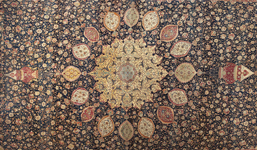![Caradosso, Pope Julius II [obverse] and View of Saint Peter's [reverse], 1506 (photo: Courtesy National Gallery of Art, Washington)](https://sites.udel.edu/vrc/files/2015/09/julius2-1zx0us2-150x150.jpg)
Caradosso, Pope Julius II [obverse] and View of Saint Peter’s [reverse], 1506 (photo: Courtesy National Gallery of Art, Washington)
What better time to think about all your favorite popes in art? Of course the first pope, Saint Peter, is a key figure. During the Middle Ages, there were a bunch of popes named Gregory and Innocent and whatnot. There was a Saint Francis (who was said to have miraculously appeared to Pope Nicholas V), but until 2013 there had never been a Pope Francis. For awhile, the Papal Court even moved from Rome to southern France, and sometimes there were simply too many popes at once. At the height of the Renaissance, Julius II commissioned Michelangelo’s ceiling in the Sistine Chapel, Raphael’s Stanze frescoes, and Bramante’s design for rebuilding Saint Peter’s Basilica. He also collected ancient sculptures like the Apollo Belvedere and Laocoön, which would inspire generations of artists. But not everybody was a fan of such papal indulgence, or indulgences for that matter. Martin Luther and other reformers soon challenged the authority of the Roman Catholic Church. When the Medici Pope Clement VII refused to annul the first marriage of Henry VIII, the king essentially declared himself the pope of England. The Vatican countered with a series of strong popes in the later 16th and 17th centuries. Innocent X was the patron of the Baroque sculptor Algardi, while Alexander VII preferred Bernini. But the temporal power of the popes began to wane in the 18th century, and by the death of the Pius IX in 1878, the Vatican complex was all that remained under their control.
All of these images–and many thousands more–are now free and available for anyone to use (legally!) because they were provided by institutions that have adopted generous Open Access policies. So thank you to such museums as the J. Paul Getty Museum, the Los Angeles County Museum of Art, the National Gallery of Art, the Walters Art Museum, the Yale Center for British Art, and the Yale University Art Gallery, among others. I encourage everyone to reward them with a little extra Web traffic this papal weekend!





